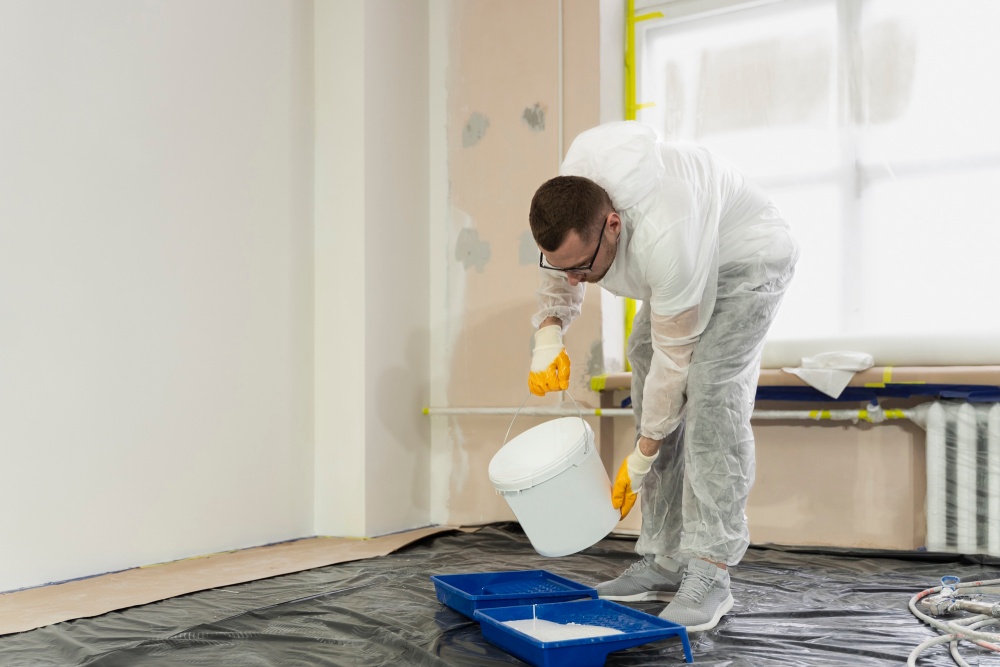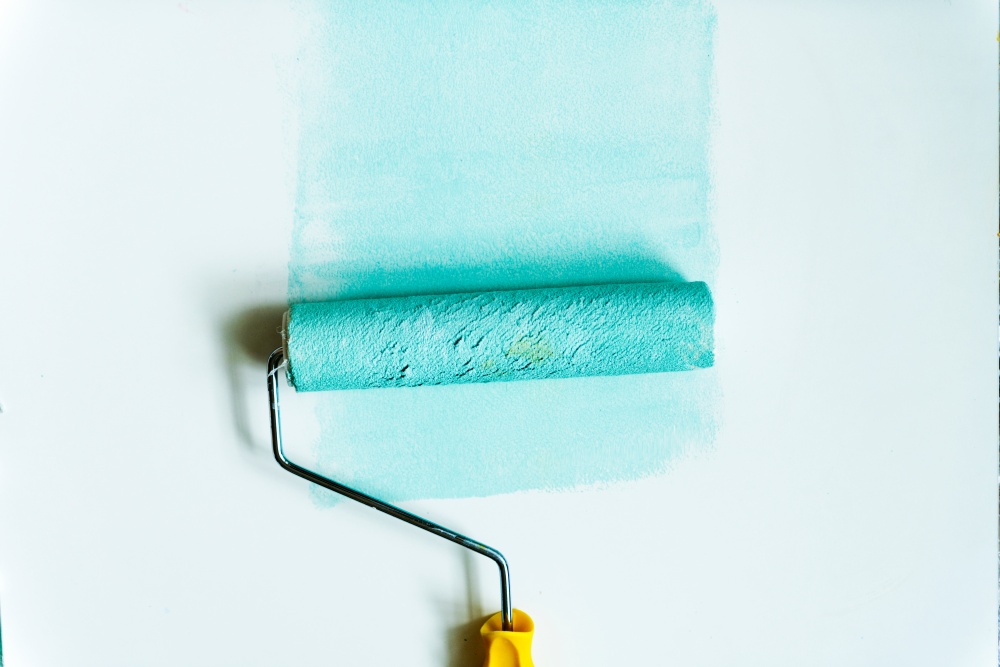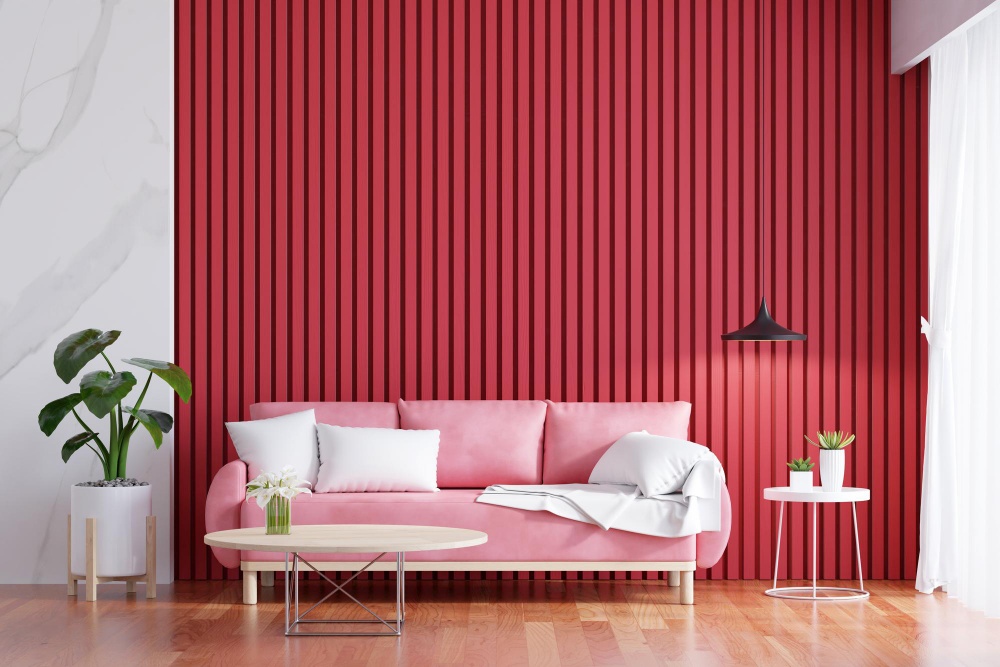
Accurately estimating how much paint is required for your project is crucial for a successful, efficient painting job. Whether you’re redecorating a room or taking on a larger-scale renovation, knowing how much paint to buy can help you save both time and money. Moreover, a more accurate estimate ensures that your project runs smoothly, with fewer disruptions and no need to rush for last-minute paint purchases.
In this guide, we’ll explore the benefits of precise paint calculations, key factors that affect the amount of paint needed, and a step-by-step process to ensure your project goes smoothly.
Factors Affecting Paint Calculation
Several factors influence how much paint is needed for a given room. Understanding these elements ensures you make the most accurate estimate.
1. Surface Area: Measuring Walls, Ceilings, and Other Surfaces
To begin, accurately measuring the surface area is essential. For walls and ceilings, the basic formula is height x width. Be sure to measure each wall individually, including any alcoves or sections with unusual dimensions.
2. Type of Paint: Variances in Coverage by Paint Type
Different types of paint offer different coverage rates. For instance, matte paints often cover more areas than glossy paints. The type of paint you choose also depends on whether it’s for interior or exterior use, as exterior paints typically offer more durability but may cover less area.
3. Number of Coats: When Multiple Coats Are Necessary
Most painting projects require more than one coat for a consistent finish, especially when changing from a dark to a light colour. Factor in the number of coats you plan to apply when calculating the paint needed. This is crucial to estimate how much paint is needed for your room—for some projects, multiple coats might be necessary to achieve an even and vibrant finish.
4. Surface Texture: Impact of Smooth vs. Textured Surfaces
The texture of the surface will also influence your paint requirements. Textured walls, such as those with a rough finish, will absorb more paint than smooth walls. This is an important consideration when estimating the quantity of paint required.
5. Colour and Coverage: Light vs. Dark Colors, Primer Requirements
Lighter colours tend to cover better than dark ones. If you’re switching from a dark shade to a lighter one, using a primer can help reduce the amount of paint required. Darker colours may require additional coats to achieve an even finish. These factors will affect how much paint you’ll need for the room.
6. Room Features: Accounting for Windows, Doors, Trims, and Moldings
Windows, doors, trims, and mouldings reduce the surface area to be painted. However, their intricate design may require more detailed painting, so ensure you subtract the correct amount from your surface area calculations.
Step-by-Step of Paint Calculation Process
Accurate paint calculations start with precise measurements and the right methodology. Follow these steps to calculate how much paint is needed for your home renovation project.
1. Measure the Dimensions
The first step is to measure the size of the walls and ceilings. For a standard room, multiply the height of the wall by the width to find the surface area. For irregularly shaped areas, divide the space into smaller, manageable sections and measure each one separately.
2. Subtract Areas of Openings
Next, subtract the areas of windows, doors, and large fixed objects to get a clearer idea of how much paint you need to cover the entire area or walls of your house. Standard windows and doors have approximate dimensions that can be used to make this process easier. For example, a typical door may cover about 20 square feet and a standard window around 15 square feet.
3. Adjust for Multiple Coats
If multiple coats are required, multiply the surface area by the number of coats. For instance, if your calculations show you need to cover 200 square feet and plan for two coats, you’ll need enough paint to cover 400 square feet.
4. Use Coverage Rate
Paint cans provide coverage information, such as “four litres covers 400 square feet.” Ensure you check this information to calculate how much paint you’ll need based on the coverage rate. It’s also advisable to use this figure to estimate larger spaces.
5. Calculate Paint Needed
Now, based on your measurements and the coverage rate, calculate the total amount of paint required. For more complex projects, such as painting an entire house, break it down into smaller sections and apply the same calculations to each, ensuring you understand how much paint is needed.
For HDB Flats
In Singapore, estimating how much paint is needed for an HDB flat or room is easier, thanks to their standard layouts. Here’s a quick guide for different HDB types:
Detailed paint estimates for different HDB types:
- 3-Room HDB Flat:
- Living/Dining Area: 5-7 litres
- Common Rooms: 5 litres per room
- Ceilings: 15-20 litres
- 4-Room HDB Flat:
- Living/Dining Area: 7-10 litres
- Common Rooms: 5 litres per room
- Ceilings: 20-25 litres
- 5-Room HDB Flat:
- Living/Dining Area: 7-10 litres
- Common Rooms: 5 litres per room
- Ceilings: 25-30 litres
- Maisonette/Executive Flats:
- Living/Dining Area: 12-15 litres
- Common Rooms: 5-7 litres per room
- Ceilings: 30-40 litres
These estimates are based on standard ceiling heights and basic wall finishes. However, the cost may vary based on the complexity and room size.
Tips for Ceilings, Common Rooms, and Living/Dining Areas
Painting different areas of your home requires specific techniques and considerations to ensure the best results. Here are some tailored tips for ceilings, common rooms, and living/dining areas to help you achieve a flawless finish and understand how much paint you need for your house.
Ceilings
For a clean, reflective look, use flat, white paint. Ceiling paint generally requires fewer coats but is trickier to apply. Ensure an even spread to hide any imperfections.
Common Rooms
Common rooms are usually easier to calculate due to their more uniform dimensions. If you’re painting an accent wall, account for the fact that speciality paints often cover less area to calculate how much paint you’ll need.
Living/Dining Areas
Larger living or dining areas will require more paint. Don’t forget to include the paint needed for trims and mouldings, which contribute to the final polished finish.
Painting Large Spaces
When dealing with large spaces, such as commercial projects or expansive residential rooms, challenges are bound to arise in terms of estimating the correct amount of paint.
Estimating Paint for Commercial or Large Residential Projects
Divide the space into smaller sections to ensure accurate calculations. High-traffic areas like hallways will need durable, scrubbable paints. Be aware that ceilings in large spaces may require scaffolding or longer rollers, affecting how you apply and waste the paint.
Strategies to Minimise Wastage
- Batch Mixing: Mix all the paint needed for a particular colour in one go to avoid colour variations. This ensures consistency in the shade across the entire surface, reducing the risk of noticeable differences in tone that can occur when mixing smaller batches separately.
- Avoid Overbuying: Purchase 10-15% more than your calculated needs to allow for touch-ups and errors, but avoid buying excessively. This approach helps ensure you have enough paint for unexpected areas or mistakes without ending up with large amounts of leftover paint that could go to waste.
- Use Paint Calculator Tools: Incorporate software or tools designed for accurate calculations, especially for irregularly shaped spaces. These tools take the guesswork out of estimating how much paint for a house, room, or wall you will need, making it easier to purchase just the right amount.
By following these tips, you can manage your paint resources effectively, minimise waste, and ensure a smooth and consistent finish for your painting project.
Painting Decorative or Feature Walls
Feature walls often require special treatment, whether with textured paints or intricate finishes. Adding this wall will directly affect how much paint is needed for the project.
Impact of Speciality Paints or Textures on Quantity Needed
Speciality paints or textures can significantly impact the quantity of paint needed. Textured paints, due to their thicker consistency, cover less area per litre, so plan for at least 25-30% more paint than regular wall finishes. Metallic or speciality finishes, on the other hand, require multiple thin coats for an even appearance, needing 1.5-2 times the amount of standard paints.
For wall murals or multi-colour designs, factor in additional paint for overlaps and blending, and consider the need for primer if painting over bold colours or uneven textures. This careful planning will ensure you know how much paint you need for your project.
Tips for Success with Decorative Walls
Creating a decorative wall requires thoughtful planning and precise execution. These walls often require special paints or techniques, which influence how much paint is needed. Some key aspects you need to pay attention to include:
- Primer Is Key: Always apply a primer to ensure speciality paints adhere properly and to minimise absorption into the wall. This step is also essential for achieving a smooth and lasting result.
- Small Batch Testing: Test your paint in a small area or surface to determine the exact coverage and finish. This will help you avoid surprises and ensure consistency in the final result.
- Professional Application: For intricate patterns, textures, or large feature walls, hiring professionals can make a significant difference. Professional painters have the skills and tools to ensure an even and consistent finish, saving you time and potential frustration.
By considering these factors and tips, you can ensure a stunning and successful decorative wall project.
Common Mistakes and How to Avoid Them
When it comes to painting, even a small oversight can lead to less-than-perfect results or additional costs. Here are some common mistakes people make during painting projects and tips on how to avoid them to ensure you accurately calculate how much paint you need for your house.
- Underestimating paint needs: Always overestimate slightly, especially for irregular surfaces or multi-coat jobs. This helps to ensure you have enough paint for your project.
- Ignoring surface preparation: Use primer where necessary to avoid absorption and enhance coverage. Proper preparation ensures an accurate estimation of how much paint is needed for the entire house.
- Not accounting for overage: It’s wise to purchase a bit more paint for touch-ups. This avoids running short and ensures you have enough paint per square foot required.
- Forgetting to include ceilings or trims: Make sure to measure and account for every surface, from walls to ceilings, to know how much paint you’ll need.
By being aware of these common pitfalls and taking the necessary steps to avoid them, you can ensure a smoother, more successful painting project.
Frequently Asked Questions About Calculating How Much Paint Is Needed For A Room
How do I calculate paint for ceilings?
Measure the ceiling dimensions, then calculate coverage based on the paint’s stated rate.
Can I skip primer and still get good coverage?
Skipping primer can affect the finish, especially on porous or dark surfaces. It’s best to use it for optimal results.
What if my walls have different textures?
Rougher textures absorb more paint, so adjust your calculations accordingly.
How do I estimate paint for multiple rooms?
Calculate each room separately, then add the totals together. Don’t forget to account for trims, windows, and doors.
Perfecting Your Paint Estimation for a Flawless Finish
Accurately estimating how much paint is required for your project can save you time, money, and hassle. By considering the factors that influence paint calculations, such as surface area, paint type, and room features, you’ll ensure a smoother and more efficient process. Whether you’re painting a room or an entire house, following these steps will help you achieve a beautiful finish while reducing waste.
If you’re still unsure about how much paint you need for your next project, or if you want to ensure the job is done right, we at 5 Star Painting are here to help. Our team of experts is ready to provide you with tailored advice and professional residential painting services for homes and commercial spaces alike. With our attention to detail and commitment to quality, we make sure that your painting project is completed on time, within budget, and to the highest standards. Contact us today to get started on your next project!


